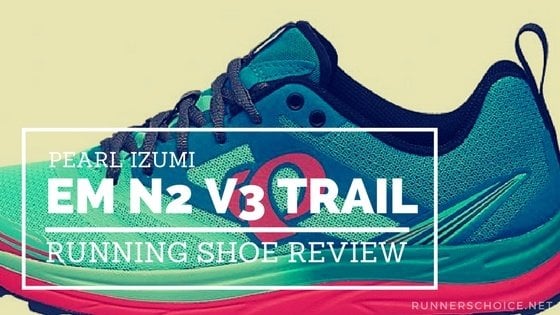
The Definitive Guide: Hydration During Running
The human body, when properly cared for, runs very much like a well-oiled machine. For endurance athletes, this can take shape in the form of a new PR (personal record) or breakthrough performance when training, fueling, and rest are all primed in sync.
However, there is one more critical element in your nutritional repertoire that must not be overlooked. It is hydration, and this crucial element can mean the difference between a stellar race and a DNF (Did not finish). The chief goal of this article will be to teach how to drink for running performance and overall well-being as an athlete.
The Importance of Hydration for Marathon Runners
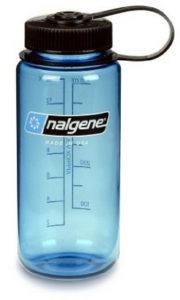 When most runners think of hydration, they may typically think about making an extra stop at the water fountain each day or bringing a Nalgene to work or school. These are good practices but may not do the trick for those training hard for a big marathon just around the corner.
When most runners think of hydration, they may typically think about making an extra stop at the water fountain each day or bringing a Nalgene to work or school. These are good practices but may not do the trick for those training hard for a big marathon just around the corner.
As with under-eating, not hydrating properly between training sessions can add extra stress to your body and can cause any of the following symptoms when training:
- Nausea/Vomiting/Diarrhea
- A Steep Decline in Performance
- Muscle Cramping
- Dizziness
- Irritability
With the above in mind, it becomes increasingly important to drink enough fluids before, during, and after training to maintain hydration levels, electrolyte balance, and prevent undue fatigue.
This should become as essential to your runs as stretching or strengthening, for proper hydration can speed muscle recovery, reduce injury risk, and transport nutrients to the body’s cells at an accelerated rate. What hydration pack is best for you?
Best Big Bottle Waist Pack for Runners
| #Rank | Picture | Name | Capacity | Price |
| 1 | 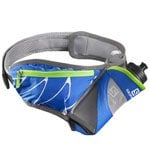 | Salomon XR Sensibelt | 20 oz | $$ |
| 2 | 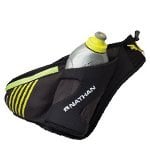 | Nathan Peak Waist Pack | 18 oz | $$ |
| 3 | 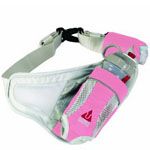 | Ultimate Direction Access Gel | 20 oz | $$ |
What and How Much to Drink for Running at Your Best
Now that we know why hydration is important to runners, let us look at how much we should be drinking each day. According to the Mayo Clinic, the average person should be drinking 9-13 cups of water per day to function optimally. These figures depend on gender, body weight, and lifestyle. However, this does not include the heavy sweat loss that may occur over the course of an hour-long run in warm weather.
Drinking before running should start several hours in advance, not right before you head out the door. Aim to drink 8oz of water for every waking hour to keep hydration levels stable throughout the day.
Drinking and running too soon afterward can cause stomach sloshing, so finish the bulk of your fluid intake 30min before exercise. Small sips are fine right until the start of your run, however.
The best way to gauge your personal sweat loss is to weigh yourself before a 30-60min run, and then again immediately following that run before you begin to rehydrate. If you weighed 150lbs prior to running, and 147lbs afterward, then you will need to replace an extra 48oz (~3lbs) of fluids over the course of the next few hours to make-up the deficit. This doesn’t have to be all in a few huge gulps, but can be taken in 12-16oz doses for better absorption.
You have regained proper hydration levels when your urine is clear to light yellow, but continue to drink moderate amounts of fluid during the day to maintain this homeostasis.
If you are training more than an hour a day, you will need to consider a sports drink in addition to your intake of plain water. Sports drinks provide energy in the form of simple carbohydrates, electrolytes like sodium and potassium, and the fluids you need to balance hydration needs.
A clear sign for runners who need to monitor electrolyte intake is salt around the waistband or on the body after running. These runners should seek a high electrolyte drink like First Endurance’s EFS or Pacific Health Labs’ Accelerade to adequately replace lost minerals. Otherwise, cramping or performance decline may occur during runs.
Note: Since many people run first thing in the morning, it is essential to hydrate well before bed. During sleep when your body is still, water is able to saturate the spinal vertebrae and repair micro-damage to nerves and any impingements along the spine. This helps prevent injury and pain when running, and research suggests that the body is better primed for harder efforts in the morning following a good night’s rest.
Best Hydration Running Belt
| #Rank | Picture | Name | Capacity | Price |
| 1 | 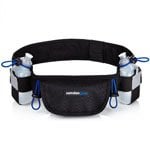 | Camden Gear | 2x6 oz | $$ |
| 2 | 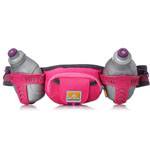 | Nathan Trail Mix | 2x9 oz | $$ |
| 3 | 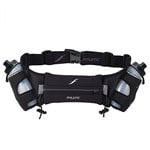 | Fitletic 16 | 2x8 oz | $$ |
If you should be on the market to get a hydration belt, the first thing you need to consider is your waist size and capacity. It’s important to affect on a balance between a belt that is going to fit comfortably and one that is durable enough.
Training and Hydration
On longer runs and workouts, it is prudent to take fluids during the run, as well as before and after as you usually would. If you are running for 60min or more, consider planning for hydration along the way to improve performance and decrease illness over the long haul.
In warmer conditions (over 50 degrees Fahrenheit) or in humid climates, you will require the total fluid and electrolytes than in cooler environs. Heavy sweaters should aim for 12-16oz per hour of exercise of water or diluted sports drink. Lighter sweaters may be able to get away with 8-12oz with no ill effects.
When it is cool outside (below 50 degrees), your body burns extra calories to heat the air coming into your lungs while running. You may not sweat as much, but you will need the total calories to maintain energy levels. Having a sports drink brewed at a higher strength or combining commercial energy gels with water will keep you going when the mercury dips into a chillier territory.
Also, proper planning is pivotal to good hydration when preparing for marathon races. On longer outings, such as a twenty-mile marathon long run or extended tempo on the road, you have several options to keeping fluid and energy levels high. The first is to bring your liquids with you in a water bottle or fuel belt.
Many companies make hand-held bottles for ease of use, and modern hydration belts are hardly noticeable once you get going. Drinking while running is a learned art, and it has to be practiced just like other elements of your training.
If you don’t want to drag your fluids along for the ride, plan to run a loop course where you can practice drinking along the way as you would in an actual race. Pick a 4-6 mile loop with either convenient water fountains near parks or set-out your own bottles to use on the run. This way, you can take any gels or chews along with your fluids to practice your race day nutrition.
The other viable option is to have a loved one or friend bike alongside you with water and fuel at the ready. If you can coerce your spouse, best buddy, child, or coach to ride with you on long jaunts, then you can train like an elite and have to worry very little about staying on top of your hydration.
Best Hydration Running Pack
| #Rank | Picture | Name | Capacity | Price |
| 1 | 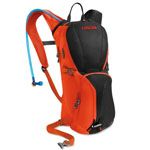 | CamelBak Lobo | 100 oz | $$ |
| 2 | 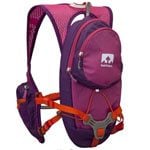 | Nathan Intensity | 70 oz | $$ |
| 3 | 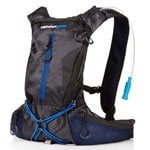 | Camden Gear | 50 oz | $$ |
| 4 | 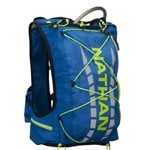 | Nathan VaporAir | 70 oz | $$$ |
| 5 | 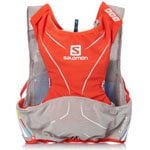 | Salomon S-lab Adv Skin3 5 Set | 34 oz | $$$ |
* For Salomon must buy hydration bladder separately.
A Runner’s Guide to Hydration
After practicing your nutrition and hydration for several weeks leading into a key race, it is time to put all of this into play on the course. Research what sports drink and gels will be available on the course far in advance so you can practice with those specific products. For example, if you are used to Gatorade, and Powerade is the only thing offered, you run the risk of GI (gastro-intestinal) distress mid-race. Never try anything new on race day!
If you are uncomfortable or dislike the products offered on the course, you will simply have to bring your own gels, energy chews, or sports drink with you. In warm weather, it is good practice to sip some water or sports drink at each aid station or every 5K of the race.
When taking gels, be sure to swallow the contents BEFORE you reach water stations so that you can wash down the concentrated carbohydrates with 4-6oz of water. This will speed their delivery into your blood stream and prevent any stomach issues from occurring.
Drinking and running at marathon pace can be tricky. Try to crimp the top of your cups at aid stations to create a smaller portal into your mouth. Otherwise, you may just spill the contents all over yourself mid-race!
Remember the cardinal rule of marathon hydration: Drink early and often, and don’t forget your electrolytes along with water to avoid a condition known as hypernatremia!
Also, don’t forget to properly rehydrate after your marathon. This is essential to a fast recovery from the exertion of 26.2mls. Drinking after running on a daily basis is critical to muscle repair, but this holds especially true on race day.
With these hydration guidelines in mind, you will be better prepared to handle the rigors of your next endurance training cycle.
Drinking and running will go hand-in-hand, so be mindful the next time you by-pass a good opportunity to hydrate. Whether you are racing for a fast time, to beat a rival, or simply to complete a new distance, everyone can benefit equally from sound hydration protocol and good sense regarding fluid intake.

